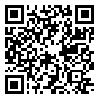Volume 9 - بهار 85-
mjms 2010, 9 - بهار 85-: 25-36 |
Back to browse issues page
Download citation:
BibTeX | RIS | EndNote | Medlars | ProCite | Reference Manager | RefWorks
Send citation to:



BibTeX | RIS | EndNote | Medlars | ProCite | Reference Manager | RefWorks
Send citation to:
Shoja Taheri F, Sadeghizadeh M, Tavakkol Afshari J. The role of HLA-DQB1 alleles in susceptibility to Rheumatoid Arthritis in Northeastern Iran. mjms 2010; 9 :25-36
URL: http://mjms.modares.ac.ir/article-30-4424-en.html
URL: http://mjms.modares.ac.ir/article-30-4424-en.html
1- Genetics Department, Faculty of Basic Sciences, Tarbiat Modares University, Tehran, Iran.
2- Department of Genetics, Tarbiat Modares University, Tehran, Iran.
3- Department of Immunogenetics and Tissue Culture, Bu-Ali Research Institute, Mashad University of Medical Sciences (MUMS), Mashad, Iran.
2- Department of Genetics, Tarbiat Modares University, Tehran, Iran.
3- Department of Immunogenetics and Tissue Culture, Bu-Ali Research Institute, Mashad University of Medical Sciences (MUMS), Mashad, Iran.
Abstract: (5155 Views)
Background: Rheumatoid Arthritis (RA) is the most common chronic inflammatory erosive joint disease with the worldwide distribution of approximately 0.5-1%. Molecular methods can be very sensitive in the early stage diagnosis of the disease and therefore prevention the late complications and disabilities. Etiology of RA, an autoimmune disease, is not exactly known but immunologic and genetic factors seem to play important roles in the pathogenesis of the disease. Genetic factors such as Human Leukocyte Antigens (HLA) are responsible for many autoimmune diseases; therefore we decided to look for a correlation between RA and the presence of specific HLA-DQB1 alleles as a possible genetic markers.
Methods: The genomic DNAs from the whole blood samples of 25 patients with RA and 86 normal individuals (Control group) were extracted by salting out method. The genomic DNA was amplified by PCR-SSP technique. HLA-Typing was done by this method after optimizing the PCR reaction for each allele. In this procedure seven serological subclasses of HLA-DQB1 can be detected.
Results: Comparing the results between the patients and the controls suggests a significant increase in the frequency of HLA-DQ5 (*0501-*0504) and HLA-DQ8 (*0302, *0305) alleles in the patient group. The P-values were respectively 0.033 and 0.007 (P<0.05)(DQ5 and DQ8 positive individuals in patients were respectively 56% and 24% compared with 31.4% and 5.8% in healthy people). The relative risk for these alleles was evaluated higher than 1.
Conclusions: The results suggest that DQ5 and DQ8 are the dominant HLA-DQB1 alleles that are associated with the susceptibility to RA. These alleles are probably important in increasing the risk of developing RA disease in Northeastern Iran and we can use them as molecular markers for diagnosis of RA.
Received: 2010/02/2 | Accepted: 2010/02/2
| Rights and permissions | |
 |
This work is licensed under a Creative Commons Attribution-NonCommercial 4.0 International License. |







